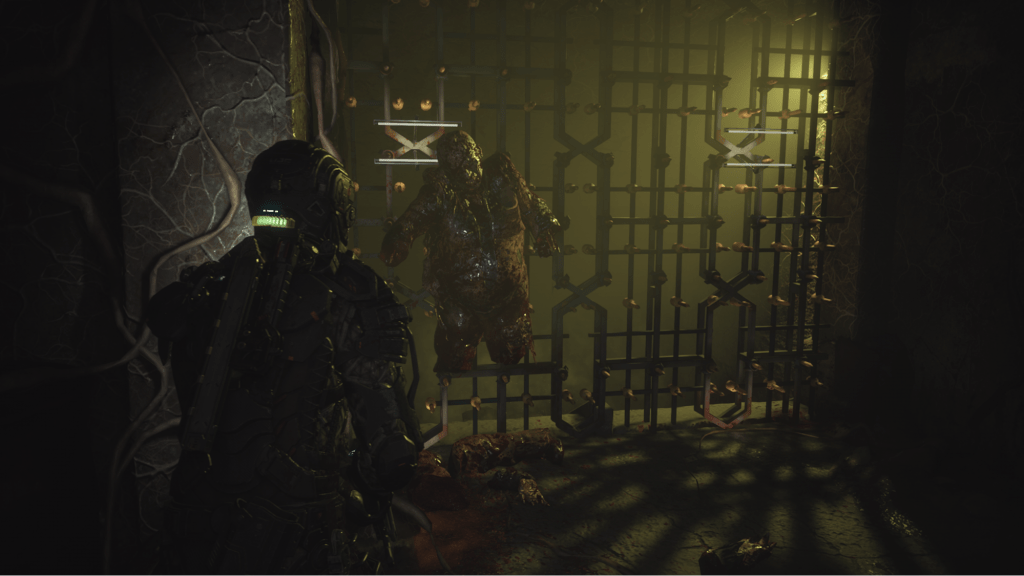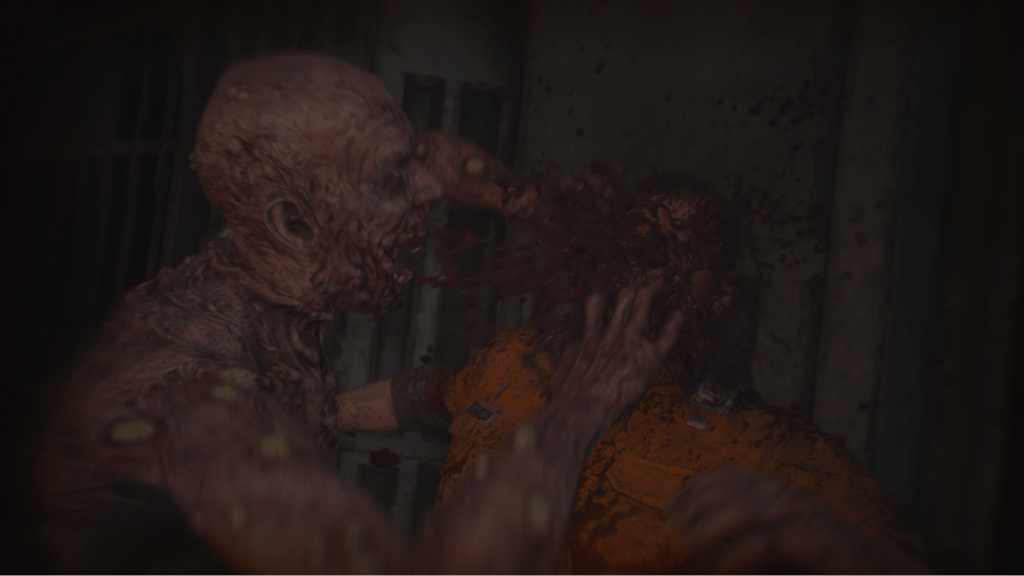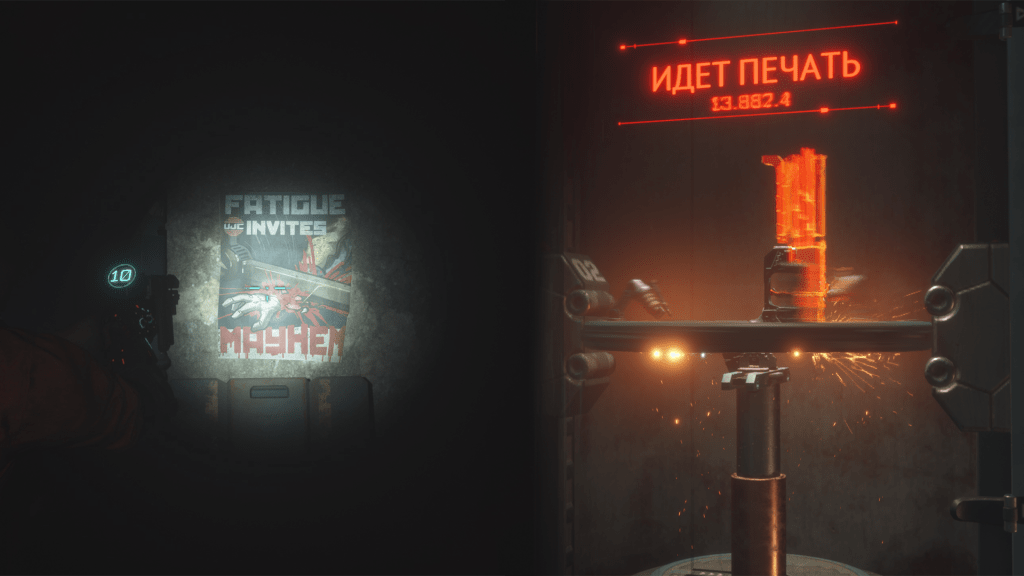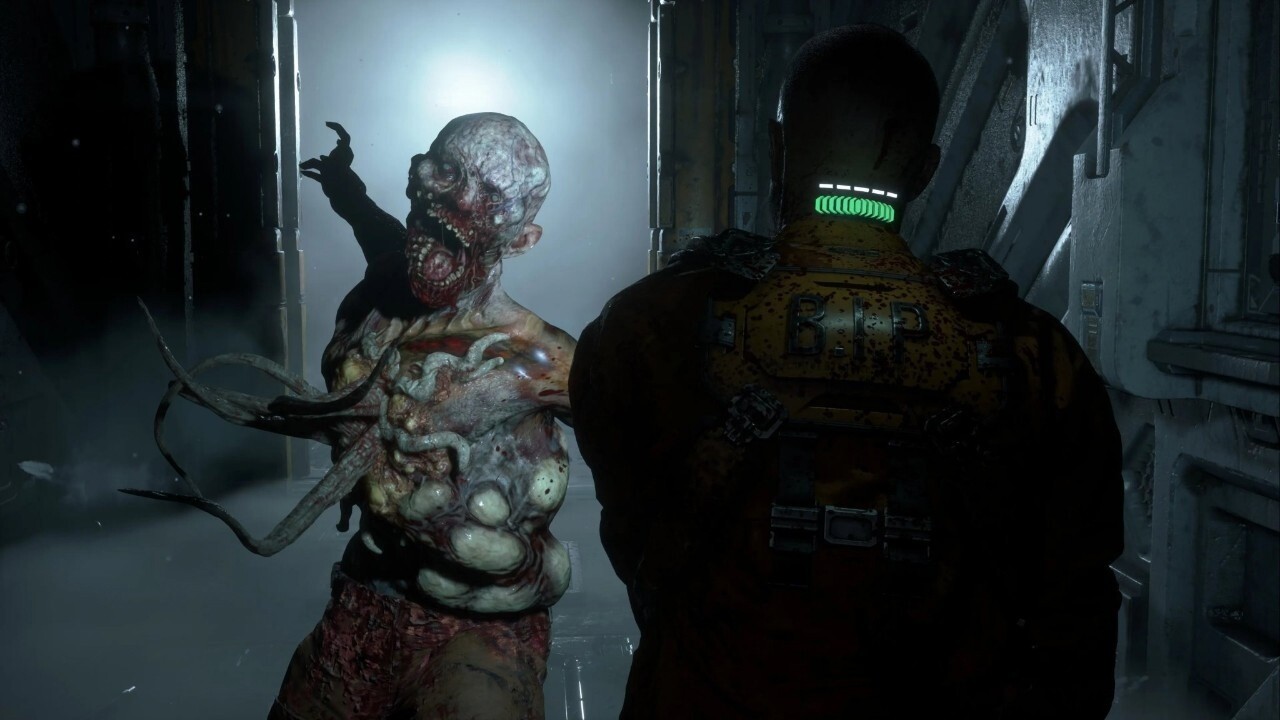Since the announcement, The Callisto Protocol has seemed like a dream game: the legendary creator of “Resident Evil in space”, who abandoned the franchise in the clutches of a greedy corporation, is back to show everyone how to make space horror. Glen Scofield has really delivered on his promise and made a new Dead Space. The first Dead Space to have all the good stuff cut out.
Genre: survival horror, third person shooter
Developer: Studios at close range
Publisher: Krafton, Bluehole Inc.
Platforms: PC, PS5, PS4, X1, XSXS
Played on: Xbox Series S
Similar to: Dead space
Somewhere in the 23rd century, mercenary Jacob Lee (Josh Duhamel) arrives at Tinplate Prison with a shipment of medical supplies with his partner Max. While Max is trying to find out from Lee what they are carrying and why he accepted another order, they are attacked by extremists led by Dani Nakamura (Karen Fukuhara), due to which the ship crashes on Callisto, the moon of Jupiter.
The survivors are picked up by the security chief of the Black Tin prison, who, by a sudden order from above, arrests not only Nakamura, but also Jacob. Flashforward – Lee wakes up in a cell, a riot has taken over the prison, and mounds of deformed flesh run across the floors, devouring the prisoners. Enlisting the support of one of the prisoners, Jacob begins a long journey to the surface. This path will lead him to reveal the terrible secrets of the Black Tin.
In Dead Space, which The Callisto Protocol is trying to copy, the plot also did not shine with originality. But interesting characters and a touch of psychologism constantly kept the player’s attention. In The Callisto Protocol, there is neither – the heroes simply do not have enough time to open up. And Jacob, with whom we spend the whole game, does not cause any interest – he is just a victim of circumstances, capable of beating people.
The poor storytelling is especially frustrating against the backdrop of a phenomenal picture, a stellar cast and outstanding facial animation.
It’s a beat, because most of the time you’ll have to deal with enemies with the help of a police electrified baton, occasionally shooting from some firearms.
At first it seems that the developers have really come up with something new and challenging. To win the fight, you must carefully monitor the enemy’s movements, dodge in the right direction and inflict a series of blows with a club. No warnings about an attack the Assassin’s Creed way – you’ll have to rely only on your reaction. As the battle progresses, pictograms appear on the body of the enemy, which, when shot, can cause greater damage.
Every punch feels heavy and it looks like Jacob is a heavyweight fighter. The pistol is also a joy to shoot, even if other types of firearms have failed and feel somewhat flat and the same. And somewhere at the very beginning of the game, Jacob gets a gravitational glove, which the guards used to torture prisoners – with its help you can attract opponents and objects. Also, all weapons and gloves can be upgraded on 3D printers, and all upgrades change the look of the guns. Sounds great, but there’s one thing.
When he strikes, Jacob focuses on a single target and one-on-one fights are extremely rare in The Callisto Protocol – the game forces skirmishes with groups of enemies. When the main character is attacked by a mob, the battle can often be considered lost beforehand, because no one will wait until you finish off your chosen target. And how do you dodge them all at once? The glove could save, but it is so inconvenient to control it that in the heat of battle it turns out to be useless, although it is pleasant to scatter opponents on spikes with it from afar before the fight.

Part of the interface is placed on the protagonist’s costume
It would seem, what’s the matter – get well and do not complain. And in the Callisto Protocol there are already two types of treatment. The first is collecting a small amount of health from certain enemies, the second is injectors scattered around the locations. Except Jacob injects the heal through a very long animation that can be interrupted by an attack, so it’s best to forget about healing in the heat of battle.
Over time, the opponents are more and more, and the battles turn into an unbearable burden, culminating in a monstrous finale in every sense. Sometimes it’s much easier to run headlong than to get into skirmishes.
Speaking of enemies, there are five types, not counting the bosses: the usual biophage, the fat man, the blind (actually, rather deaf), the spitter and the invisible creeper who likes to jump out of the dark to Jacob . Also, monsters on the verge of death begin to mutate. And it’s better to slow down this process with shots, because otherwise you will face a bunch of meat that kills the hero in just a couple of shots. The variety isn’t impressive, but with the local combat system it’s for the best.

The developers did not lie: each death of Jacob is accompanied by a picturesque animation, although sometimes the “wounded” version of the hero is done well, very carelessly
All this mess takes place on the premises of the Black Tin prison, from the monotony and illogicality of which you can go crazy. “Black Tin” is a series of identical rooms with unjustified elevations, giant saws, pointed walls and ventilation shafts. Surrealism is also added by the constantly repeating bloody inscriptions on the walls – as if someone was walking around the entire prison with a spray can of paint and a couple of stencils. Only once the game allows you to walk through a small, but picturesque and gloomy snowy place.
By the way, there are a lot of mines in the prison. And also narrow and long cracks, through which, due to the strange arrangement of the checkpoints, you will have to squeeze through several times after each death. There are also branches for those who like to study locations: some lead to the rooms you just passed through, others to distant dead ends with loot and notes, from which you will have to go back to continue moving through the story. Forget about shortcuts, “Tinplate” is a giant steel gut, where nothing connects with anything, and Jacob returns to the already completed locations only according to the storyline and exclusively through the blackout of the screen.

The pleasant side of local places is the translation of all interesting inscriptions and posters
It will take a long time to walk along this gut, occasionally fighting. Not even the simplest puzzles and interactions, a maximum of a dozen times to take the fuse in the next room. And the game almost does not reward for this torment: you walk and fight for 40 minutes, then listen to boring conversations of the heroes for a couple of minutes, and then start the cycle again. Just like in the first Dead Space!
It seems that such a linear structure is a great option for horror. Take at least the infinitely budgeted horror films with scripted scenes or scary sounds, where you are also led by the hand and not allowed to be distracted from the plot. Unfortunately, the Callisto protocol can’t really scare you. Even for a particularly anxious person, howlers here will only cause irritation. There are no terrible sounds either, except for the roar of biophages, and the constant darkness at the levels only strains the eyes. The game always seems to create suspense that never breaks through. Like Shepard’s incessantly rising tone – uncomfortable at first, and then just a headache.
Nothing from narrative to level design works in The Callisto Protocol. The combat system sometimes brings pleasure, but more often it causes anger, which Hidetaka Miyazaki never dreamed of, because here you always blame the game for mistakes, not yourself. It just satisfies an incredible picture, and even that is not output from all devices. But I really want to believe that we will still see the second part with “finished” battles and learn more about this world. Judging by the free prequel podcast, the developers have a lot to say. Perhaps the sequel will be better and more interesting than the original in everything, as Dead Space 2 once was. Maybe Glenn Scofield shouldn’t be admitted either.


![[디센터 스냅샷] “Hope Advisor” by Hyunguk Jang of Decenter [디센터 스냅샷] “Hope Advisor” by Hyunguk Jang of Decenter](https://i-invdn-com.investing.com/news/LYNXMPED9G1CM_L.jpg)